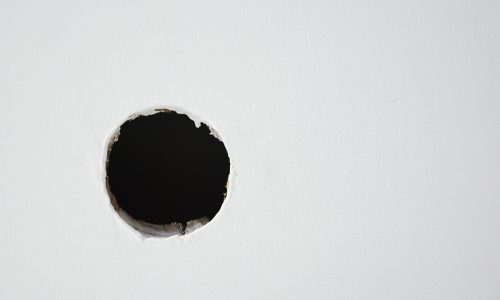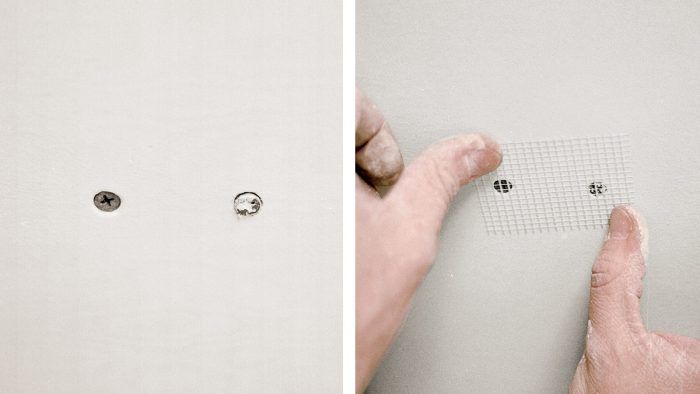Step-by-Step Approaches to Getting Flawless Drywall Repair and Installment
Achieving flawless drywall repair work and installation calls for an organized method. It involves comprehending the various kinds of drywall and the devices necessary for the job. Appropriate area preparation is vital prior to beginning any kind of work. drywall contractor. Each step, from covering openings to mounting new sheets, demands interest to detail. The procedure doesn't end with installation; ending up strategies are essential for a sleek look. The next actions will ensure a seamless outcome, however exactly what do they entail?
Comprehending Drywall Types and Tools Needed

The installation devices are just as essential. An energy blade is crucial for cutting drywall sheets, while a drywall saw can assist in making precise cuts for components or electrical outlets. T-squares guarantee exact measurements, and drywall screws or nails protect the panels to wall surface studs. In addition, a drywall lift can promote the installment of big sheets, minimizing physical stress. Knowledge with these tools and kinds significantly adds to the effectiveness and high quality of drywall projects.
Preparing the Area for Repair or Setup
Preparing the location for drywall fixing or setup is important to guarantee a effective and smooth procedure. First, the surrounding area should be cleared of furnishings and other challenges to offer adequate working space. This not only ensures security but additionally avoids damage to items. Next off, it is important to cover the floor with ground cloth to catch any type of debris or dirt produced during the job.
Additionally, the wall surfaces should be examined for any type of loosened paint or wallpaper that may disrupt attachment. Getting rid of these aspects creates a tidy surface area for the new drywall. Before start, it is recommended to switch off power to electric outlets or components around. Ensuring sufficient lights in the office will additionally improve visibility and focus during the repair service or installation process. drywall contractors. By diligently preparing the area, one prepares for an effective drywall task
Step-by-Step Process for Patching Holes

Patching openings in drywall requires a systematic technique to guarantee a seamless repair. The very first step entails examining the size of the hole. For small openings, a patching compound might be adequate, while larger holes demand a spot. Next, the broken location ought to be cleaned and prepared by getting rid of any type of loose debris.
For little openings, applying spackling substance with a putty knife is advised, smoothing it over the opening and feathering the edges. When dry, fining sand the location hop over to here ensures a smooth coating. For larger openings, a drywall patch need to be reduced to size, placed over the hole, and protected with screws. After setting up the patch, the same spackling procedure is duplicated, adhered to by fining sand.
Ultimately, the patched area must be primed and painted to match the bordering wall surface. This precise procedure guarantees an expert look and prolongs the life-span of the fixing.
Installing New Drywall Sheets: A Comprehensive Guide
Setting up new drywall sheets calls for mindful preparation and implementation to ensure a sturdy and visually enticing surface. First, the area must be determined accurately to identify the number of sheets needed. It is vital to select the best thickness, generally 1/2-inch for interior wall surfaces and 5/8-inch for ceilings or fire-rated applications.
Next off, the studs or structure should be checked for any type of irregularities, ensuring they are lined up and appropriately spaced. When putting the drywall sheets, they need to be placed flat to reduce joints and boost structural honesty. A drywall lift can be valuable for above installments.
Fastening the sheets with drywall screws at proper periods makes specific a protected installment. It is necessary to countersink the screws somewhat below the surface to plan for the completing procedure. Following these standards will certainly cause a strong structure, prepared for the next action in drywall finishing.
Ending Up Touches: Taping, Mudding, and Fining Sand Methods
Once the drywall sheets are securely fastened, the focus changes to the finishing touches that will certainly supply a polished appearance. This procedure begins with taping, using either paper or fiberglass harmonize tape to cover the seams between sheets. The tape ensures a smooth shift, decreasing the risk of splitting. Complying with insulation, mudding is essential; a joint substance is applied over the tape to fill up spaces and develop a smooth surface area. Commonly, several coats are needed, every one feathered out better than the before lessen exposure.
After enough drying time, fining sand is the final action in achieving a perfect coating. A fine-grit sandpaper is made use of to smooth the dried substance, ensuring there are no blemishes or bumps. Interest to information throughout this stage is significant, as it considerably impacts the total appearance of the wall surface. The end outcome need to be an even, professional-looking surface area prepared for priming and paint.
Often Asked Questions
Exactly how Do I Select the Right Drywall Thickness for My Task?
To pick the right drywall thickness, think about the task's function, place, and architectural requirements. Standard thicknesses consist of 1/2-inch for basic usage and 5/8-inch for fire-rated applications, making sure longevity and conformity with building codes.

Can I Set Up Drywall Over Existing Drywall?
Yes, mounting drywall over existing drywall is possible. this contact form Nevertheless, it is crucial to guarantee the underlying surface is cost-free and safe and secure from damage. Correct fastening and consideration of density a fantastic read are imperative for a successful installment.
What Are the most effective Practices for Drywall Disposal?
The very best techniques for drywall disposal consist of reusing when possible, making use of regional waste monitoring services, and following standards for harmful products if suitable. drywall contractor. Properly securing and labeling waste warranties compliance and safety and security during disposal
The length of time Should I Wait On Mud to Dry Prior To Sanding?
Generally, one need to wait 1 day for drywall mud to completely dry before sanding. Drying time can differ based on moisture and temperature level, so checking for a firm texture is suggested before continuing.
Are There Eco-Friendly Drywall Options Available?
Yes, environmentally friendly drywall alternatives are readily available. These choices usually use recycled products, low-VOC adhesives, and sustainable production methods, decreasing ecological influence while supplying efficient insulation and longevity for various construction and remodelling tasks.
An utility blade is essential for cutting drywall sheets, while a drywall saw can assist in making precise cuts for electrical outlets or fixtures. Preparing the location for drywall repair or installation is crucial to assure a reliable and smooth process. Covering openings in drywall requires a methodical strategy to guarantee a seamless repair service. Mounting new drywall sheets needs mindful planning and implementation to assure a strong and aesthetically appealing coating. Yes, installing drywall over existing drywall is possible.